Hohenschwangau Castle
The royal castle or Schloss Hohenschwangau is a splendid medieval castle and lies above the villages of Hohenschwangau and Schwangau. Take a leisurely ride in a horse-drawn carriage from the village of Schwangau to visit the castles. Great views of Schloss Hohenschwangau, the family home of King Ludwig as we approached Neuschwanstein. Details and photos of the interior of the Schloss Hohenschwangau are in the booklet I mentioned in my earlier post on Neuschwanstein. Hohenshwangau is decorated with beautiful wall paintings and scenes from various medieval saga’s. The Queen’s bedroom is different, decorated in a Turkish style with paintings illustrating King Maximilian’s visit to turkey in 1833; the room furnished with gifts from the Turkish Sultan Muhamed II. While the rooms are not as sumptuous as Neuschwanstein they look very impressive only simpler in design and furnishings. The Living Room of the Queen has paintings which illustrate the typical day-to-day life of the lady of the castle in the Middle Ages. The Hall of Heroes is wonderful, of medieval appearance with a gilded bronze centerpiece, wall paintings, and an impressive bust of King Ludwig II in Carrara marble. The ceilings throughout Schloss Hohenschwangau look stunning in elegant stucco designs with gilding in gold and silver.
Schloss Hohenschwangau – King Ludwig’s home
Hohenschwangau was the childhood residence of Ludwig and his brother Otto. Built by their father King Maximilian II of Bavaria, construction of the castle began in 1833 and continued until 1837, with further additions being added up until 1855. Queen Marie took pleasure in creating an alpine garden at Hohenschwangau, with plants gathered from all over the alps on display.
Schloss Hohenschwangau became the official summer and hunting residence of Maximilian, his wife Marie of Prussia and the two princes. Whilst the King and Queen lived in the main building the two boys lived in the annex. Following the death of King Maximilian in 1864, his son Ludwig became King Ludwig II and moved into the castle. The King never married so his mother Marie continued living at Hohenschwangau.
After King Ludwig’s death in 1886, Queen Marie remained in residence in Hohenschwangau until she died in 1889. Her brother-in-law, Prince Regent Luitpold of Bavaria lived on the 3rd floor of the main building of Hohenschwangau. When he passed away in 1912, Schloss Hogenschwangau opened to the public as a museum the following year.
It would seem that living in Hohenschwangau as a young prince surrounded by so many beautiful objects, and paintings of medieval saga’s, Ludwig’s association in later life with Richard Wagner and his wonderful music, all had a very strong influence on the young prince as a child, carrying on into adulthood his love of beauty, art, and music.
Neuschwanstein is an example of his taste for beautiful creations, as well as the two other castle he built, Herrenchiemsee and Linderhof. It was not the only influence in his life as he visited France and many other countries all influenced by the various forms of art, music and poetry of the time. Herrenchiemsee, and Linderhof (to a lesser degree) modeled on the palace at Versailles built by King Louis XIV of France. King Ludwig II was a great admirer of King Louis XIV and visited him in Versailles several times. Many palaces throughout Europe at that time modeled on the Palace of Versailles with varying degrees of difference in size and opulence.
Don’t miss a tour through Hohenschwangau castle if you are in the vicinity.
Horse Drawn Carriage
Enjoy a pleasant ride back down the hill from Neuschwanstein or Schloss Hohenschwangau in a horse-drawn carriage. Beautiful horses, a ‘pair of blacks’; half way down they changed the horses. This time a handsome pair of chestnut horses with creamy-white manes took us into Schwangau. Considering all the elegance and lavishness of the Castle of King Ludwig thought they could have had a more glamorous horse-drawn carriage to be pulled by these beautiful horses. Just a touch of gilding would have been nice? However, thinking about the road, it is quite steep and the carriage can take about nine people so requires a very sturdy vehicle. The horse-drawn carriage was quite comfortable and a very enjoyable ride back to Schwangau, with time to take in the castles, forest and mountain views.
Next on our tour – the Palace of Linderhof……
Related Posts:
- Beautiful Schloss Neuschwanstein
- Abbey of St Mang’s Fussen Bavarian Alps
- Beautiful rococo Wieskirche beautiful Bavarian alps
- Augsburg Fuggerei village settlement
- Dinkelsbuhl medieval fortifications-medieval city wall
- Rothenburg – a beautiful medieval town
- Romantic Road attractions Germany
- Romantic Road Frankfurt Germany
- Bavaria Germany Wurzburg – along the Romantic Road
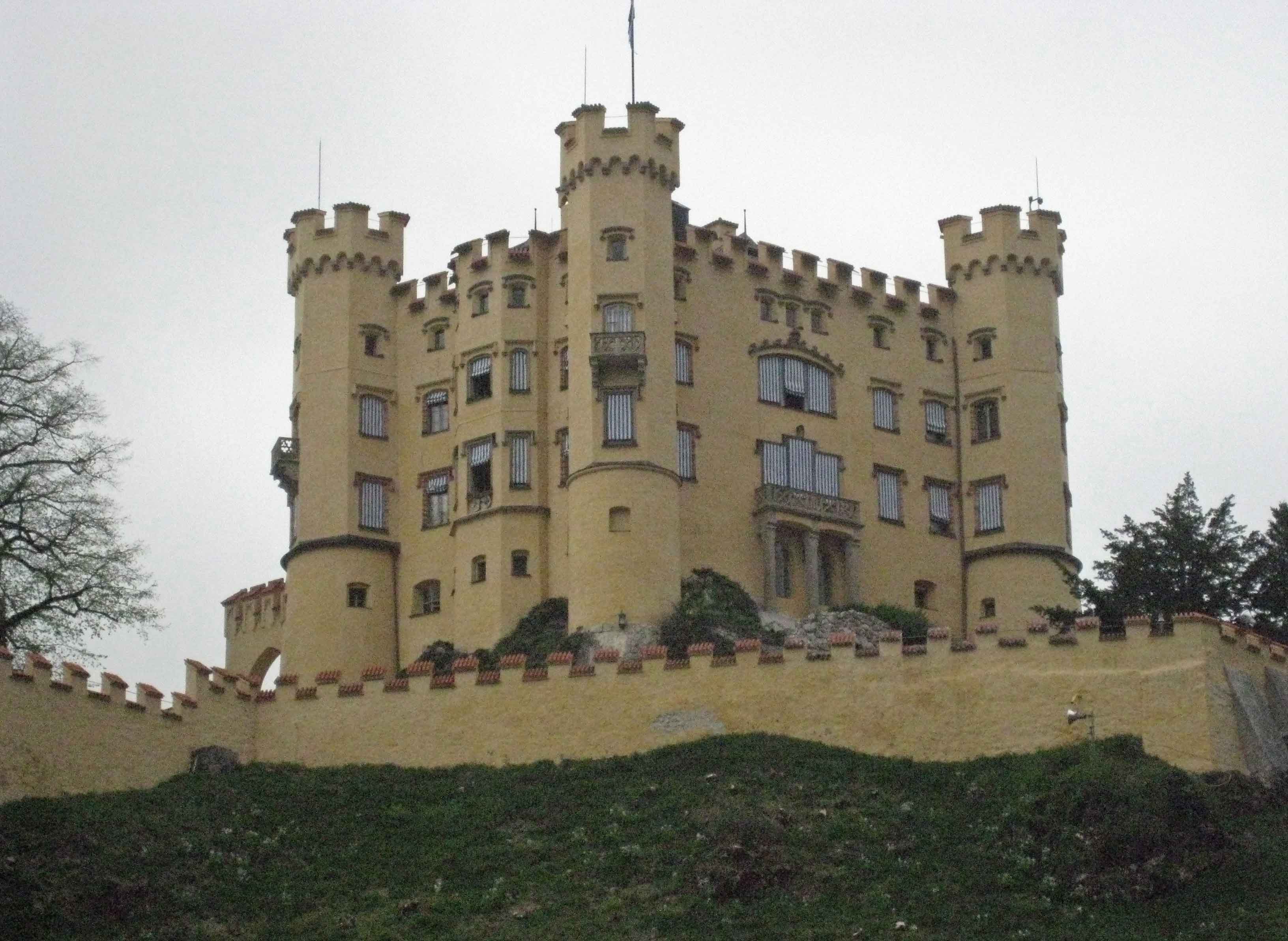
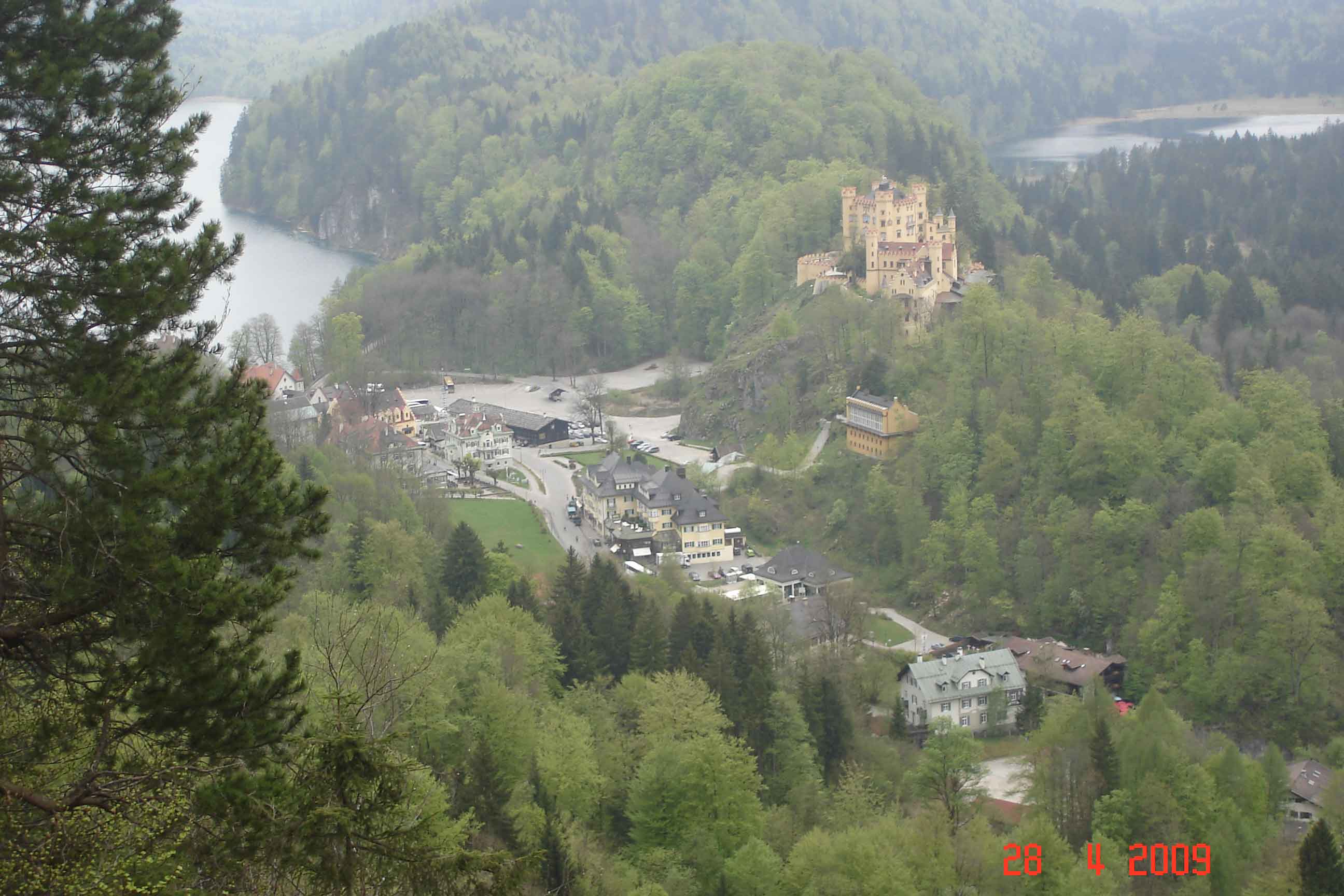
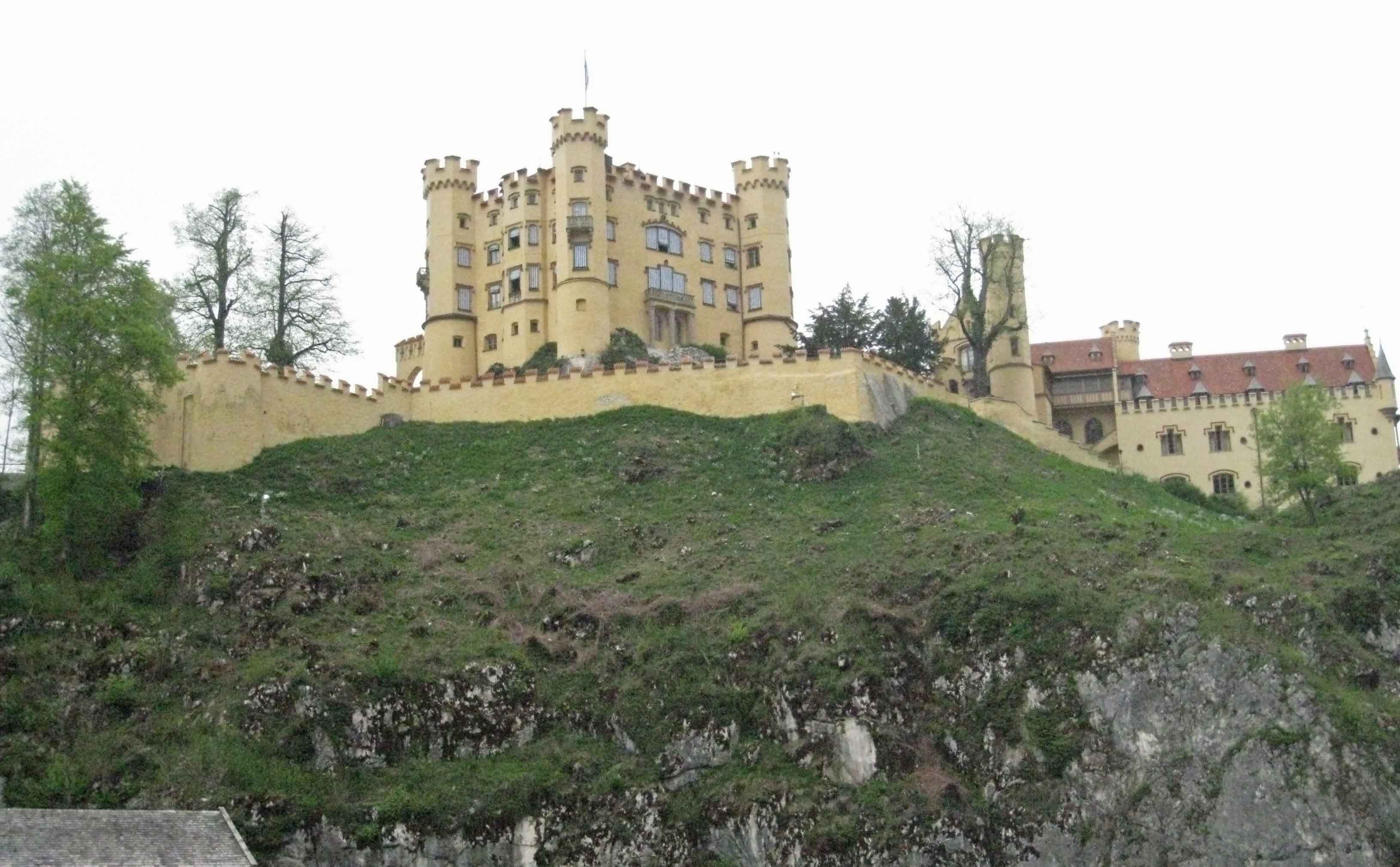
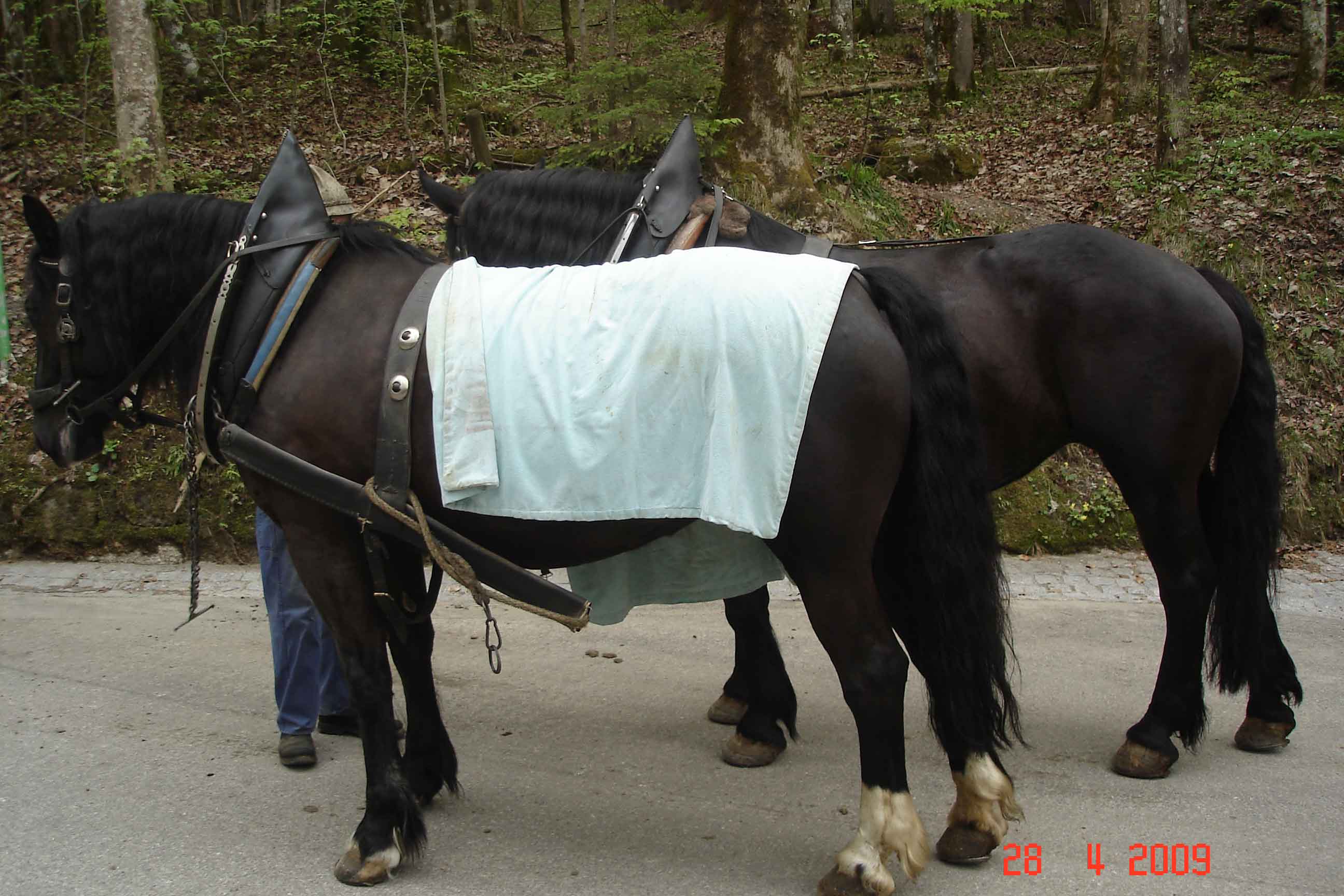
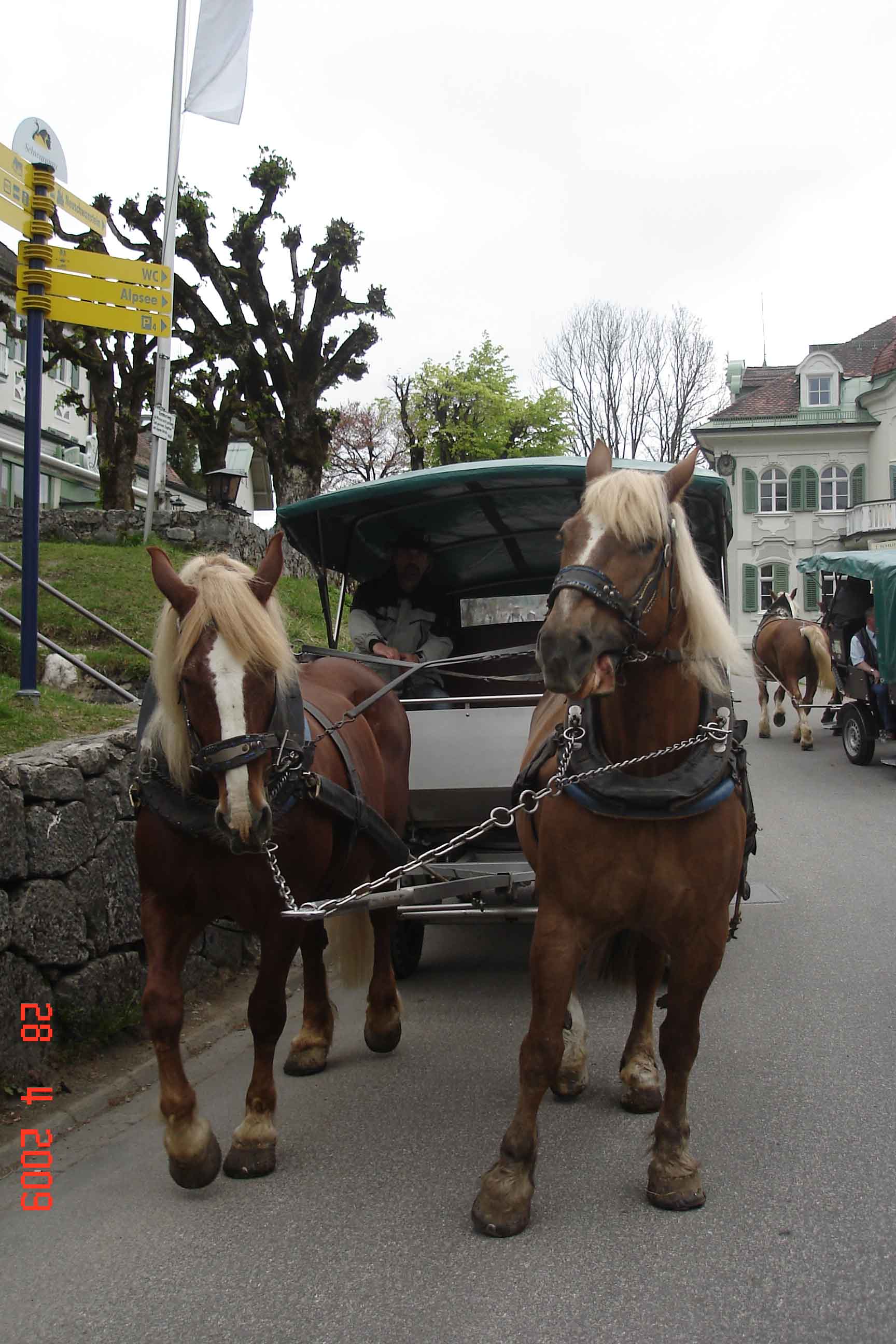
Speak Your Mind